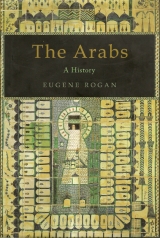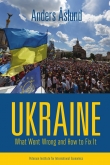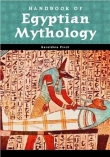
Текст книги "The Arabs: A History"
Автор книги: Eugene Rogan
Жанры:
Военная история
,сообщить о нарушении
Текущая страница: 38 (всего у книги 47 страниц)
Two underground organizations emerged to give direction to the Intifada. In the West Bank, the local branches of the PLO factions, including Yasser Arafat’s Fatah movement, the Popular and the Democratic Fronts for the Liberation of Palestine, and the Communists, combined to create an underground leadership that called itself the United National Command (UNC). In Gaza, Islamists associated with the Muslim Brotherhood created the Islamic Resistance Movement, better known by its Arabic acronym, Hamas. The strength of Israeli repression made it impossible for these underground leaderships to meet or exercise their authority in open. Instead, they each published periodic leaflets—one series of leaflets by Hamas, and a totally independent series of communiquйs by the UNC—to set out their objectives and to guide public action. The leaflets of the United National Command and Hamas were calls to action and news sheets. They also captured the increasingly bitter struggle between the secular nationalist forces of the PLO and the rising Islamist movement for control of the Palestinian national movement within the Occupied Territories. The Muslim Brotherhood was the best-organized political movement in the Gaza Strip and was the first to respond to the popular uprising. Its leader was a paraplegic activist in his mid-fifties named Shaykh Ahmad Yassin. Like so many of its residents, Yassin had come to Gaza as a refugee in 1948. Paralyzed in a work accident as a teenager, he had continued his education to become a school teacher and religious leader. He joined the Muslim Brotherhood in the 1960s, becoming a great admirer of Sayyid Qutb, whose works he reprinted and circulated to reach the widest possible readership in Gaza. In the mid-1970s he established a charitable organization named the Islamic Center, through which he funded new mosques, schools, and clinics across Gaza that provided a network for the spread of Islamist values. On December 9, 1987, the night the troubles broke out, Yassin convened a meeting of the leaders of the Brotherhood to coordinate action. They decided to transform the Muslim Brotherhood in Gaza into a resistance movement, and Hamas was launched with their first leaflet on December 14. The novelty of Hamas was to articulate Palestinian aspirations in strictly Islamist terms. From its first communiquй, Hamas set out an intransigent message that combined confrontation with the Jewish state and a rejection of secular Arab nationalism. “Only Islam can break the Jews and destroy their dream,” Hamas insisted. Following the arguments of Abdullah ’Azzam, who made the case for jihad in both Afghanistan and Palestine, the Palestinian Islamists declared their resistance against the foreign occupier on Islamic land rather than against authoritarian Arab leaders, as Sayyid Qutb advocated. “When an enemy occupies some of the Muslim lands,” Hamas asserted in its 1988 charter, “Jihad becomes obligatory for every Muslim. In the struggle against the Jewish occupation of Palestine, the banner of Jihad must be raised.”49 Though they were secular nationalists as had dominated Palestinian politics since the 1960s, there was something new about the Unified National Command as well. For the first time, local activists in the West Bank were putting forward their own views without consulting Arafat and the leadership in exile. In the West Bank, the UNC issued its first communiquй shortly after the Hamas leaflet was released. Sari Nusseibeh recalled that the first UNC leaflet was authored by “two local PLO activists” who “were already in jail by the time their flyers hit the streets,” arrested by the Israeli authorities in a massive clampdown. The leaflet called for a three-day general strike—a total economic close-down of the Occupied Territories—and warned against attempts to break the strike or cooperate with the Israelis. The UNC continued to issue newsletters every couple of weeks (it issued thirty-one in the first year of the Intifada alone) in which the group began to articulate a series of demands: an end to land expropriation and to the creation of Israeli settlements on occupied land, the release of Palestinians from Israeli prisons, and the withdrawal of the Israeli army from Palestinian towns and villages. The leaflets encouraged people to fly the Palestinian flag, which the Israelis had long forbidden, and to chant “Down with the occupation!” and “Long live free Arab Palestine!” The UNC’s ultimate objective was an independent Palestinian state with its capital in East Jerusalem.50 The Intifada was quickly turning into an independence movement. The outbreak of the Intifada caught the PLO leadership in Tunis completely by surprise. Recognized by all Palestinians as their “sole legitimate representative,” the PLO had long monopolized the Palestinian national movement. Now the initiative had passed from the “outside” leadership in Tunis to “inside” PLO activists working in the Occupied Palestinian Territories. The distinction between “insiders” and “outsiders” put the PLO leadership at a distinct disadvantage. Suddenly, Arafat and his lieutenants looked redundant as the residents of Gaza and the West Bank launched their own bid for an independent Palestinian state. In January 1988 Arafat moved to bring the Intifada under the PLO’s authority. He dispatched one of Fatah’s highest-ranking commanders, Khalil al-Wazir (better known by his nom de guerre Abu Jihad), to coordinate action between Tunis and the West Bank. The UNC?s third leaflet of January 18, 1988, was the first to be authorized by the Fatah leadership in Tunis. Within a matter of hours, over 100,000 copies of the leaflet were distributed across Gaza and the West Bank. The residents of the Occupied Territories responded to the authoritative voice of Arafat?s political machine with alacrity. As Sari Nusseibeh observed, ?it was like watching musicians take cues from a conductor.?51 Henceforth the Intifada would be managed by Arafat and his officials. The Israeli government was determined to prevent the PLO from taking advantage of the Intifada to make political gains at Israel’s expense. Abu Jihad’s mission was cut short by Israeli assassins, who gunned down the PLO official at his home in Tunisia on April 16, 1988. Yet once the link between the UNC and PLO had been forged, Tunis was able to preserve its control over the secular forces of the Intifada. The cycle of strikes and demonstrations, called in response to leaflets issued by the UNC and Hamas, continued unabated. The Israeli authorities had expected the movement to run out of steam. Instead, it seemed to be gaining in strength and posed a genuine challenge to Israeli control in the Occupied Territories. As the Intifada entered its third month, the Israeli authorities turned to extra-legal means to quell the uprising. Drawing on the Emergency Regulations drafted by British mandate officials long before the Geneva Conventions established international legal standards for the treatment of civilians under occupation, the Israeli army resorted to collective punishments such as mass arrests, detention without charge, and house demolitions. International public opinion was appalled by the image of heavily armed soldiers responding to stone-throwing demonstrators with live fire, prompting Yitzhak Rabin, then Israel’s defense minister, to order the use of “might, force and beatings” instead of lethal fire. The brutality of this seemingly benign policy was exposed when the CBS television network in the United States broadcast images of Israeli soldiers meting out horrific beatings to Palestinian youths near Nablus in February 1988. In one particularly graphic segment, a soldier was seen to extend a prisoner’s arm and pound it repeatedly from above with a large rock to break the bone.52 Israel’s attorney general admonished Rabin to warn his soldiers of the illegality of such acts, but the Israeli army continued to subject Palestinian demonstrators to violent beatings. Over thirty Palestinians were beaten to death in the first year of the Intifada.53 Against this background of Israeli violence, it is remarkable that the Palestinians preserved the tactics of nonviolent resistance. Palestinian claims to nonviolence were challenged by Israeli authorities, who noted that protestors threw iron bars and Molotov cocktails as well as stones—missiles capable of inflicting serious injury or death. Yet the Palestinians never resorted to firearms in their confrontations with the Israelis, which did much to reverse decades of Western public opinion that had portrayed the Palestinians as terrorists and Israel as a beleaguered David figure. Israel found itself in the unaccustomed position of dispelling a distinct Goliath image in the international press. Nonviolence made the Intifada the most inclusive of Palestinian movements. Rather than privileging young men with military training, the demonstrations and civil disobedience of the Intifada mobilized the whole of the population of the Occupied Territories—men and women, young and old—in a common liberation struggle. The underground leaflets of Hamas and the UNC provided a wide range of resistance strategies—strikes, boycotts of Israeli products, home teaching to subvert school closures, garden plots to increase food self-reliance—that empowered Palestinians under occupation and instilled a deep sense of common purpose that kept the Intifada going in spite of heavy Israeli repression.
Tensions emerged between the secular United National Command and Hamas as the Intifada ran through the spring and into the summer of 1988. Both organizations claimed to represent the Palestinian resistance. In its leaflets, Hamas referred to itself as “your movement, the Islamic Resistance Movement, Hamas,” and the UNC claimed leadership of the Palestinian masses, “this people that heeded the call of the PLO and of the United National Command of the Uprising.”54 The secular and Islamist rivals read each other’s leaflets and vied for control over popular actions in the streets. When Hamas called for a national strike in its leaflet of August 18—a prerogative the PLO claimed for itself in the Occupied Territories—the UNC issued its first direct criticism of the Islamist organization, claiming “every blow to the unity of ranks is tantamount to doing the enemy a significant service and harms the uprising.” Such jostling for ascendancy masked the fundamental differences that divided Hamas from the PLO: whereas Hamas sought the destruction of the Jewish state, the PLO and the UNC wanted to establish a Palestinian state alongside Israel. Hamas viewed the whole of Palestine as inalienable Muslim land that needed to be liberated from non-Muslim rule through jihad. Its confrontation with Israel would be long-term, for its ultimate objective was the creation of an Islamic state in the whole of Palestine. The PLO, in comparison, had been moving toward a two-state solution since 1974. Yasser Arafat seized on the Intifada as a vehicle to achieve independent statehood for the Palestinians in the Gaza Strip and the West Bank, with its capital in East Jerusalem—even if this meant conferring recognition on Israel and conceding the 78 percent of Palestine lost in 1948 to the Jewish state. The positions of the two resistance movements could not be reconciled, and so the PLO proceeded down the path of the two-state solution without consideration for the views of the Islamic Resistance Movement. Palestinian resistance and Israeli repression had placed the Intifada squarely on the front pages of the international press—and nowhere more so than in the Arab world. In June 1988, the Arab League convened an emergency summit in Algiers to address the Intifada. The PLO took the opportunity to present a position paper that called for mutual recognition of the right of the Palestinians and the Israelis to live in peace and security. Hamas rejected the PLO?s position outright and reasserted its claim for Muslim rights to the whole of Palestine. Its leaders made their views known in Hamas?s leaflet of August 18, in which the Islamic Resistance insisted that ?the Muslims have had a full?not partial?right to Palestine for generations, in the past, present and future.? Undeterred by Islamist opposition, the PLO proceeded to use the Intifada to legitimize its call for a two-state solution to the Israeli-Palestinian conflict. In September 1988 the PLO announced plans to convene a meeting of the Palestine National Council (PNC), the Palestinian parliament in exile, to consolidate the gains of the Intifada and secure the Palestinian people’s “national rights of return, self-determination, and the establishment of an independent state on our national soil under the leadership of the PLO.”55 Again Hamas rejected and condemned the PLO position. Its leaflet of October 5 read, in part: “We are against conceding so much as an inch of our land which is steeped in the blood of the Companions of the Prophet and their followers.” Hamas insisted that “we shall continue the uprising on the road to the liberation of our whole land from the contamination of the Jews (with the help of God).” The lines of confrontation between the PLO and the Islamic Resistance could not have been clearer. Arafat’s agenda for the meeting of the PNC, which had been set for November 1988, was nothing less than a Palestinian declaration of statehood in the Occupied Territories. For many in Gaza and the West Bank, worn down by eleven months of the Intifada and violent Israeli reprisals, statehood held the promise of independence and an end to the occupation, which seemed sufficient gains for their sacrifices, and they looked forward to the November meeting of the PNC with growing anticipation. Though Sari Nusseibeh had some reservations about the PLO’s policies, he saw the impending declaration of independence as “an important milestone, and like everyone else, I looked forward to its unveiling.” Nusseibeh, who had received an advance copy of Arafat’s text, wanted the Palestinian declaration of independence to be a moment that people would remember, and he hoped to read the text to “tens of thousands of people” in the Haram al-Sharif, the mosque complex atop the Temple Mount in the Old City of Jerusalem. “I wanted a people under occupation, the people of the intifada, to congregate at the center of our universe, and to celebrate our independence.” It was not to be. On November 15, 1988, the day Arafat addressed the PNC, Israel imposed a draconian curfew over the territories and East Jerusalem, banning cars and civilians from the streets. Nusseibeh chose to disregard the curfew and made his way through the backstreets to the Al-Aqsa Mosque, where a handful of political activists had gathered, milling about with religious clerics. “Together, we all walked into Al-Aqsa mosque. At the appointed hour, as the bells from the [church of the] Holy Sepulchre swung, and calls wailed out from the minarets, we all solemnly read our declaration of independence.?56 The declaration, which Arafat read to the nineteenth session of the Palestine National Council in Algiers, represented a radical departure from past PLO policies. The declaration endorsed the UN partition plan of 1947 that provided for the creation of Arab and Jewish states in Palestine, and it approved UN Security Council Resolutions 242 and 338, drafted after the 1967 and 1973 Wars, that established the principle of the return of occupied land for peace. The declaration committed the PLO to peaceful coexistence with Israel. The PLO had come a very long way since its London diplomat Said Hammami’s first attempts to broach the two-state solution in 1974. No longer a guerrilla organization—Arafat now categorically renounced “all forms of terrorism, including individual, group and state terrorism”—the PLO presented itself to the international community as the provisional government of a state in waiting. International recognition was quick to follow. Eighty-four countries extended full recognition to the new state of Palestine, including most Arab states, a number of European, African, and Asian countries, and such traditional supporters of the Palestinian liberation movement as China and the Soviet Union. Most West European states granted a diplomatic status to Palestine that fell short of full recognition, but the United States and Canada withheld recognition altogether. In mid-January 1989 the PLO scored another symbolic victory by gaining the right to address the UN Security Council on equal footing with member states.57 The PNC declaration did not meet with the Israeli government’s approval. Prime Minister Yitzhak Shamir responded in a written statement on November 15 to denounce the declaration as “a deceptive propaganda exercise, intended to create an impression of moderation and of achievements for those carrying out violent acts in the territories of Judea and Samaria,” and the Israeli cabinet dismissed it as “disinformation meant to mislead world public opinion.”58 Hamas too was unimpressed by the statement. The Islamic resistance issued a communiquй in which it stressed “the right of the Palestinian people to establish an independent state on all the soil of Palestine,” not just in the Occupied Territories: “Do not heed the U.N. resolutions which try to accord the Zionist entity legitimacy over any part of the soil of Palestine . . . for it is the property of the Islamic nation and not of the U.N.”59
For all the excitement surrounding the PNC declaration of independence, the initiative brought no tangible benefits to the residents of Gaza and the West Bank. Israel showed no more willingness to relinquish the Occupied Territories after November 15, 1988, than it had before the PNC declaration. After a year of excitement and high expectations, nothing seemed to change. And yet the Palestinians had paid an enormous price for such small results. By the first anniversary of the Intifada, in December 1988, an estimated 626 Palestinians had been killed, 37,000 Palestinians had been injured, and over 35,000 Palestinians had been arrested in the course of the year?many of them still behind bars at the start of the second year of the uprising.60 By 1989 the early idealism of the Intifada had given way to cynicism, and the unity of purpose to factionalism. Hamas supporters broke out in open fights with Fatah members. Vigilantes within Palestinian society began to intimidate, beat, and even murder fellow Palestinians suspected of collaboration with the Israeli authorities. And still the communiquйs were issued, the demonstrations held, the rocks thrown, and the casualties mounted as the Intifada continued toward no discernable end, the latest phase of a decades-old Arab-Israeli conflict for which the international community seemed to have no solution. 
Over the course of the 1980s, a number of Islamic movements launched armed struggles to overthrow secular rulers or to repel foreign invaders. The Islamists hoped to establish an Islamic state ruled in accordance with sharia law, which they firmly believed to be God’s law. They took their inspiration from the success of the Iranian Revolution of 1979 and the creation of the Islamic Republic of Iran. In Egypt a splinter movement managed to assassinate President Anwar Sadat. In Syria, the Muslim Brotherhood mounted a civil war against the Ba’thist government of Hafiz al-Asad. The Lebanese Shiite militant movement Hizbullah, heavily influenced by the Islamic Republic of Iran, viewed the United States and Israel as two sides of the same coin and sought to deal both a massive defeat in Lebanon. Jihad in Afghanistan was directed against both internal and external enemies, targeting the Soviet occupation forces and the Communist government in Afghanistan that was openly hostile to Islam. Islamists in Gaza and the West Bank called for a long-term jihad against the Jewish state to restore Palestine to the Islamic world under an Islamic government. The military successes enjoyed by Hizbullah in forcing a total U.S. withdrawal and an Israeli redeployment, and by the Afghan mujahidin by forcing the Soviets to evacuate their country in 1989, did not lead to the ideal Islamic states that their ideologues had hoped for. Both Lebanon and Afghanistan remained mired in civil wars long after their external enemies had been forced into retreat. Islamists across the Arab world adopted a long-term approach to the ultimate goal of an Islamic state. The Egyptian Islamist Zaynab al-Ghazali spoke in terms of a thirteen-year cycle of preparation, to be repeated until a significant majority of the Egyptians supported an Islamic government. Hamas vowed to struggle for the liberation of all of Palestine “however long it takes.” The ultimate triumph of the Islamic state was a protracted project and required patience. If the Islamists had lost some battles in the “struggle in the path of God,” they remained confident that they would ultimately prevail. In the meantime, Islamist groups chalked up a number of successes in reshaping Arab society. Islamist organizations emerged across the Arab world, attracting growing numbers of adherents in the 1980s and 1990s. Islamist values were spreading in Arab society, as more young men began to grow beards and women increasingly took to head scarves and modest body-covering fashions. Islamic publications dominated bookshops. Secular culture was driven into retreat before an Islamic resurgence that continues ever stronger down to the present day. The Islamists took courage from major changes in world politics at the end of 1989. The certainties of the Cold War were crumbling as quickly as the Berlin Wall, which fell on November 9, marking the end of U.S.-Soviet rivalry and ushering in a new world order. Many Islamists interpreted the collapse of Soviet power as proof of the bankruptcy of atheist communism and a harbinger of a new Islamic age. Instead, they found themselves faced with a unipolar world dominated by the last surviving superpower, the United States of America.
CHAPTER 14
After the Cold War
After nearly a half-century of superpower rivalry, the Cold War came to an abrupt end in 1989. Soviet president Mikhail Gorbachev’s policies of greater openness (glasnost) and internal reform (perestroika) wrought permanent change to the political culture of the Soviet Union during the mid-1980s. By the time the Berlin Wall was formally breached in November 1989, the Iron Curtain separating Eastern and Western Europe already lay in tatters. Starting with the defeat of the Communist Party in the Polish elections in June 1989, the governments of the Soviet bloc fell one by one: in Hungary, Czechoslovakia, Bulgaria. The once all-powerful dictator of East Germany, Erich Honecker, tendered his resignation that autumn, and Nicolae Ceausescu, who had ruled Romania with an iron fist for over twenty-two years, was summarily executed by revolutionaries on Christmas Day 1989. The international system was transformed as the balance-of-power politics of the two superpowers gave way to a unipolar age of American dominance. Gorbachev and U.S. president George H. W. Bush captured the sense of hope engendered by the end of the Soviet-American antagonism, promising a “new world order.” For the Arab world, one of the central theatres of the Cold War, the new era of American ascendancy held great uncertainties. Once again, Arab leaders were forced to come to terms with new rules in the international arena. The conservative Arab monarchies were disconcerted by the specter of popular movements overturning long-standing governments, but they did not mourn the collapse of communism: Morocco, Jordan, Saudi Arabia, and the other Gulf states had placed their trust in the West, and, fortunately for them, the West had emerged victorious from the Cold War. Not so the left-leaning Arab republics like Syria, Iraq, Libya, and Algeria, which had more in common with the Communist regimes of Eastern Europe: single-party states, they were all headed by long-term dictators with large armies and centrally planned economies. The video images of Ceausescu?s corpse broadcast around the world provoked deep disquiet in some Arab capitals. If it could happen in Romania, what was to prevent similar events in Baghdad or Damascus? Clearly, the Soviet Union could no longer be counted on to stand up for its Arab allies. For the past four decades, Arab republics had turned to the Soviet Union for military hardware, development assistance, and diplomatic support to counterbalance the forces of Western domination. Those days were finished. In autumn 1989 Syria’s president, Hafiz al-Asad, pressed Gorbachev for more advanced weapons to help Syria achieve strategic parity with Israel. The Soviet president rebuffed him, saying: “Your problems are not going to be solved through any such strategic points—and anyway, we’re no longer in that game.” Al-Asad returned to Damascus devastated. The factions of the PLO were also worried. George Habash, leader of the Popular Front for the Liberation of Palestine, criticized Gorbachev’s policies on a visit to Moscow in October 1989. “If you go on like this you are going to hurt us all,” he warned. Veteran analyst Mohamed Heikal witnessed the confusion among the Arab leadership. “Everyone sensed that a shift from one phase of international relations to another was taking place, but they still clung to the old familiar rules. On all sides there was a failure to anticipate the new ones correctly.”1 The old Arab conflicts of the Cold War-era burst to the fore in the new unipolar age of American dominance. Iraq, weakened economically by its eight-year war with Iran (1980–1988), still had sufficient military resources to assert its bid for regional ascendance. The 1990 Iraqi invasion of Kuwait proved the first crisis of the post–Cold War world. The invasion of one Arab state by another polarized the entire Arab world, with some countries opposing foreign intervention and others participating in an American-led coalition to liberate Kuwait from Iraqi rule. The Kuwait crisis also divided citizens from their governments, as Iraqi president Saddam Hussein emerged as a popular hero across the Arab world for standing up to America and for his cynical promises to liberate Palestine from Israeli rule. It was not enough to drive Iraq from Kuwait to restore order in the Arab region. Saddam Hussein had linked Iraq’s occupation of Kuwait to Syria’s position in Lebanon and Israel’s longstanding occupation of Palestinian territory. In the aftermath of the war to liberate Kuwait, the Arab world was forced to address the Lebanese Civil War, then in its fifteenth year. The United States for its part convened in Madrid the first meeting of Arabs and Israelis to address their differences since the 1973 Geneva Peace Conference. It was unclear to contemporary observers if Iraq’s invasion and subsequent expulsion from Kuwait was the harbinger of a new age of conflict resolution, or just an escalation in a long history of regional disputes. 
One of the first Arab leaders to recognize the realities of the post–Cold War world was the president of Iraq, Saddam Hussein. As early as March 1990, Hussein had warned his fellow Arab leaders that “for the next five years there would be only one true superpower”—the United States.2 In many ways, Iraq was better positioned than the other Arab republics to make the transition from the old rivalries of the Cold War to the new realities of American predominance. Although Iraq had enjoyed particularly close relations with the Soviet Union, confirmed in their 1972 Treaty of Friendship and Cooperation, the eight-year Iran-Iraq War (1980–1988) had led to a thaw in U.S.-Iraqi relations. American hostility to the Islamic Republic of Iran drove the Reagan administration to support Iraq in order to prevent an outright Iranian victory. Even after the war ended in stalemate, Washington had continued its rapprochement with Baghdad. The new American president, George H. W. Bush, had every intention of building better relations with Iraq when he came to office in January 1989. In October of that year the Bush administration issued a national security directive that set out U.S. policies toward the Persian Gulf that put a high premium on closer ties to Iraq. “Normal relations between the United States and Iraq would serve our longer-term interests and promote stability in both the Gulf and the Middle East,” it read. “The United States should propose economic and political incentives for Iraq to moderate its behavior and to increase our influence with Iraq.” The directive also encouraged an opening of the Iraqi market to American companies. “We should pursue, and seek to facilitate, opportunities for U.S. firms to participate in the reconstruction of the Iraqi economy.” This extended to “non-lethal forms of military assistance” to enhance American influence over the Iraqi defense establishment.3 Saddam Hussein could be forgiven for believing he had guided his country well through the turmoil of the end of the Cold War. Yet Saddam Hussein still faced daunting challenges ruling his country—challenges stemming from disastrous decisions taken since he came to power in 1978. The Iraqi president’s unprovoked and ultimately fruitless war with Iran had taken a terrible toll on the country—and his own support base among the Iraqi populace. Half a million Iraqi men died in the course of the eight-year conflict, provoking domestic opposition to Hussein’s rule. As the war dragged on, the opposition to Saddam Hussein grew violent. In 1982 Hussein survived an assassination attempt in the village of Dujail to the north of Baghdad. The Iraqi president responded with overwhelming violence, ordering his security forces to kill nearly 150 villagers in retaliation. In northern Iraq, Kurdish factions took advantage of the war with Iran to make a bid for autonomy. The Iraqi government responded with an extermination campaign dubbed al-Anfal, or “the spoils.” Between 1986 and 1989, thousands of Iraqi Kurds were forcibly resettled, 2,000 villages were destroyed, and an estimated 100,000 men, women, and children were killed in Anfal operations. In one of the most notorious incidents, the Iraqi government used nerve gas against the village of Halabja in March 1988, killing 5,000 Kurdish civilians.4 Along with the Kurds, the Sunni and Shiite communities of Iraq also faced intense repression—arbitrary arrest, widespread torture, and summary executions—to stifle dissent. Only confirmed members of the ruling Ba’th Party were to enjoy confidence and advancement within Saddam Hussein’s Iraq. Once celebrated for its secular values, high literacy rates, and gender equality, by 1989 Iraq had degenerated into a republic of fear.5 Besides a restive populace, the most immediate challenge facing Saddam Hussein at the end of the Iran-Iraq War was the reconstruction of his country’s shattered economy. Iraq’s wealth derived from its massive petroleum resources. For eight years, the country’s vital lifeline of oil had been cut by attacks on pipelines and port facilities, and a ruthless tanker war that took the Iran-Iraq conflict to the Gulf’s international shipping lanes. Deprived of oil revenues, Iraq had been forced to borrow billions of dollars from its Arab Gulf neighbors to sustain its war effort. By the war’s end in 1988, Iraq owed some $40 billion to the other Gulf states, and debt repayment consumed over 50 percent of Iraq’s oil income in 1990.6 Compounding Iraq’s difficulties was the steady decline in the price of oil. To pay off his country’s debts Saddam Hussein needed oil prices to remain in the range of $25 a barrel (at the height of the Iran-Iraq War, prices had reached as high as $35 a barrel). He watched in despair as the international price slumped to $14 by July 1990. The Gulf, at peace once again, was now able to export all the oil the world needed. To make matters worse, some Gulf states were producing well beyond their OPEC quotas. Kuwait was one of the worst offenders. Kuwait had its own reasons for breaking ranks with OPEC over production quotas. Earlier in the 1980s, the Kuwaiti government had diversified its economy by investing heavily in Western refineries and opening thousands of gasoline stations across Europe under the new brand name “Q-8,” a homonym for “Kuwait.” Kuwait’s crude oil exports increasingly went to its own facilities in the West. The more crude oil the Kuwaitis sold to their Western refineries, the higher their profits in Europe.7 These refining and marketing outlets generated higher profit margins than the export of crude and insulated Kuwait from variations in the price of crude oil. Kuwait was more interested in generating maximum output than seeking the highest price per barrel by hewing to OPEC’s guidelines. Iraq, in contrast, had no such external outlets, and its revenues were inextricably linked to the price of crude oil. Every drop of one dollar in the price of a barrel of oil represented a net loss of $1 billion to Iraq’s annual revenues. In OPEC meetings, Iraq and Kuwait found themselves on the opposite side of the table, with Iraq pressing to reduce output and drive up the price of oil while Kuwait called for greater output. The Kuwaitis paid little attention to Iraqi concerns. In June 1989 Kuwait simply refused to be bound by the quota it was assigned by the other OPEC members. Having supported Iraq?s war effort against Iran with loans totaling $14 billion, the Kuwaitis felt justified in putting their own economic interests first now that the war was over. Saddam Hussein began to pin the blame for Iraq’s economic woes on Kuwait, and he responded by applying pressure and threats to the small Gulf shaykhdom. He called on Kuwait not only to forgive Iraq’s $14 billion debt but to make a further loan of $10 billion for Iraq’s reconstruction. He accused Kuwait of stealing Iraqi oil from their shared Rumaila oil field. He also claimed that Kuwait had seized Iraqi territory during the Iran-Iraq War, and he demanded the “return” of the strategic islands of Warba and Bubiyan at the head of the Gulf both for military facilities and to provide Iraq with a deep-water port. Hussein’s assertions, though unfounded, reopened Iraq’s long-standing challenge to Kuwait’s frontiers and independence. Iraq had already claimed Kuwait as part of its territory twice in the twentieth century—in 1937, and upon Kuwaiti independence in 1961. Yet Iraq’s Arab neighbors took these new claims and threats to be no more than empty rhetoric. The Arab states were mistaken: in July 1990, Hussein backed up his words with actions when he deployed large numbers of troops and tanks to Iraq’s border with Kuwait. The other Arab states were forced into action, now aware that a serious crisis was brewing. Egypt and Saudi Arabia responded to the growing crisis by trying to broker a diplomatic solution. King Fahd of Saudi Arabia and President Mubarak of Egypt arranged a meeting between the Kuwaitis and Iraqis in the Saudi Red Sea port of Jidda, scheduled for August 1. Saddam Hussein promised the Arab leaders before the meeting that all differences between Iraq and its neighbors would be settled in a “brotherly manner.” Saddam Hussein had already made up his mind to invade Kuwait. Before sending his vice president to meet with the Kuwaiti crown prince in Jidda, Hussein requested a meeting on July 25 with the U.S. ambassador to Baghdad, April Glaspie, to sound out Washington’s position on the crisis. Glaspie assured the Iraqi president that the United States had “no opinion on the Arab-Arab conflicts, like your border disagreement with Kuwait.”8 It appears that Hussein interpreted Ambassador Glaspie’s remarks to mean the United States would not intervene in an inter-Arab conflict, and shortly after the meeting, he changed the scope of his invasion plans. Initially he had envisaged a limited incursion into Kuwait to seize the two islands and the Rumaila oil field. Now he called for a total occupation of the country. In a meeting with the governing Revolutionary Command Council, Hussein argued that if he were to leave the ruling al-Sabah family in charge of part of Kuwait, they would mobilize international—particularly American—pressure to force Iraq to withdraw. A quick and decisive invasion that toppled the al-Sabah before they had a chance to call for American intervention would give Iraq the best chance for success. Moreover, were Iraq to absorb its oil-rich neighbor entirely, it could solve all its economic problems at once. When Saddam Hussein sent his Vice President to meet with the Kuwaiti Crown in Jidda on August 1, he was using diplomacy to achieve total surprise for his military plans. The meeting between Ezzat Ibrahim and Shaykh Saad al-Sabah was conducted amiably, without any hit of threats. The two men parted on good terms and agreed to hold their next meeting in Baghdad. By the time they left Jidda at midnight, Iraqi troops were already moving across the border into Kuwait.








